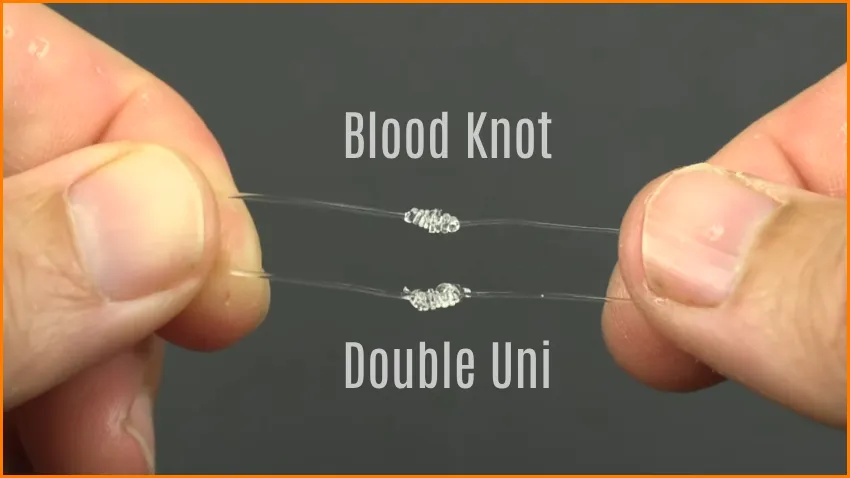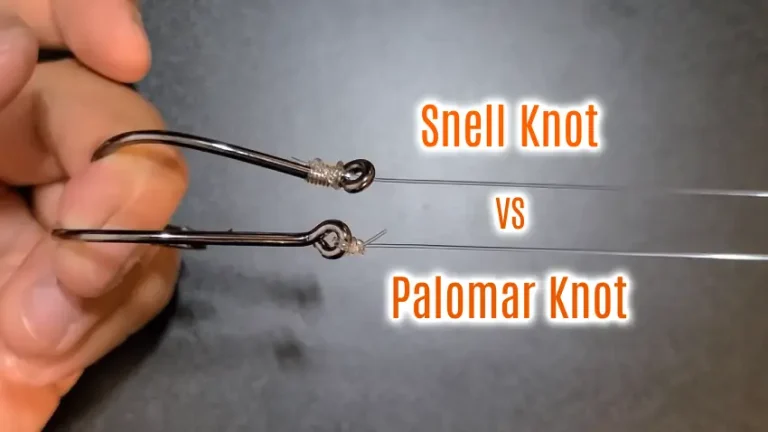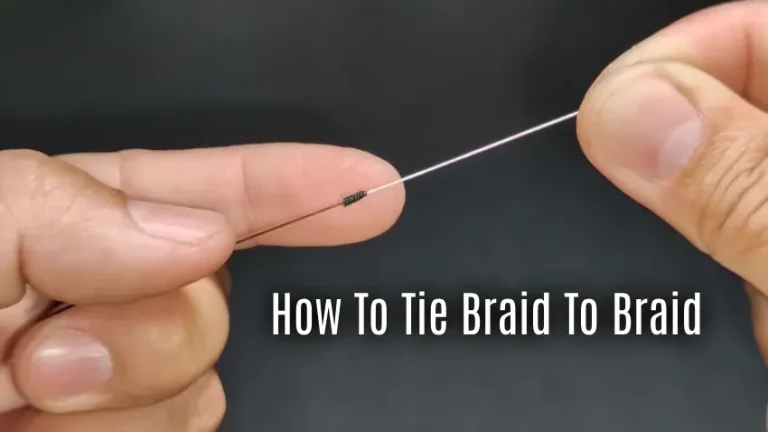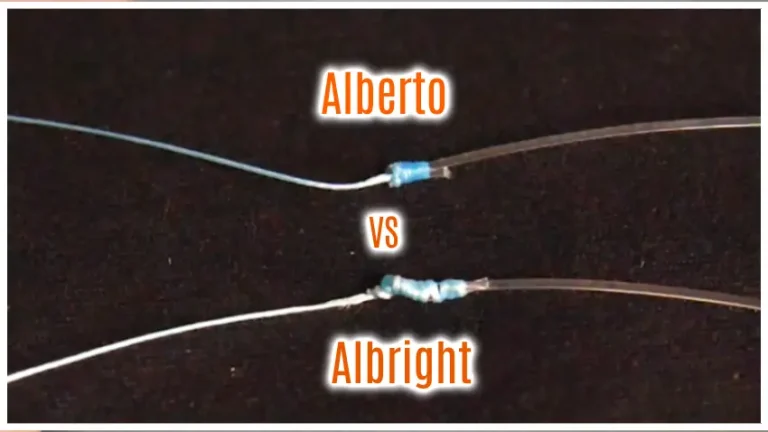Blood Knot vs Double Uni: 8 Differences When Fishing
You’re passionate about fishing and want to know the best knot for securing your line. Two knots, the Blood Knot and the Double Uni Knot, stand out as contenders for various fishing scenarios. For anglers seeking to maximize their fishing experience, understanding the differences between each is crucial.
The Blood Knot is a strong and streamlined choice for mono-to-mono connections, excelling in strength and providing a compact design that minimizes bumps.
On the other hand, Double Uni Knots are versatile but do not offer the same level of streamlined strength as Blood Knots, so they are slightly bulkier. They often connect lines of different diameters, such as monofilament to braided lines.
Here, we’ll explore the differences between these two popular fishing knots. We’ll also explain to you how to tie them and explain why saliva is often used during the process.
Differences Between Blood and Double Uni Knot for Fishing
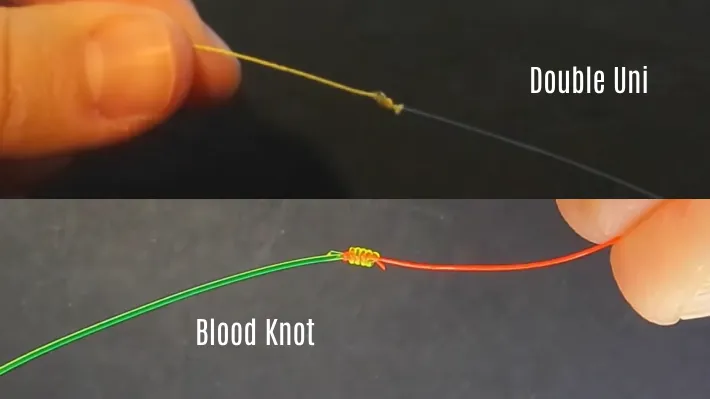
When comparing the Blood vs Double Uni Knots for fishing, there are several key points to consider.
- Strength and streamlining
- Knot testing results
- Application specificity
- Use of saliva for knot cinching
- Transitioning from braid to mono
- Aesthetics and ease of tying
- Knot adjustment
- Reliability and break-off prevention
No 01. Strength and Streamlining
You can easily distinguish the differences between the Blood Knot and the Double Uni Knot for fishing in terms of strength and streamlining.
The Blood Knot is superior in both aspects. Its compact design ensures a strong and secure connection between mono lines, making it ideal for situations where strength is crucial.
Additionally, the Blood Knot’s streamlined profile minimizes any protruding bumps, allowing for smooth passage through guides and reducing the chance of snagging or tangling.
Conversely, the Double Uni Knot, while still strong, may not offer the same level of streamlining. Its multiple wraps can create bulk, potentially hindering the knot’s ability to pass through guides seamlessly.
No 02. Knot Testing Results
The knot testing results demonstrate the disparities between the Blood Knot and the Double Uni Knot for fishing.
According to our research, the Blood Knot consistently outperformed the Double Uni Knot in a series of six trials using Ande Monofilament Leader with 20-pound and 30-pound lines. The Blood Knot exhibited an impressive 13% overall strength advantage over the Double Uni Knot.
These results highlight the Blood Knot’s reliability and robustness, making it an excellent choice for anglers seeking a strong knot.
Meanwhile, the Double Uni Knot does not provide the same level of strength and consistency. But its simplicity and ease of tying make it a viable knot for many fishing applications.
No 03. Application Specificity
The Blood Knot excels in finesse applications, particularly when using lighter materials and fine leaders. Its smaller bump allows for a smoother passage through rod guides, reducing the risk of snagging or breaking. This makes it a preferred choice for delicate presentations and when targeting skittish fish.
On the other hand, the Double Uni Knot offers versatility and reliability. It’s suitable for various connections and knots, making it a great option for anglers with flexibility in their fishing setups.
The Double Uni Knot is a dependable choice if you need to join lines of different diameters, connect leaders to mainlines or attach terminal tackle.
No 04. Use of Saliva for Knot Cinching
When cinching knots for fishing, saliva can improve the Blood Knot’s performance but doesn’t significantly impact the Double Uni Knot.
Applying saliva during cinching helps the Blood Knot grip better and tighten more securely. The added moisture from saliva enhances the knot’s ability to hold the fishing line, reducing the risk of slippage and increasing overall strength.
However, the Double Uni Knot doesn’t benefit as much from saliva application during cinching. This knot is already designed to provide excellent grip and strength without the need for additional moisture.
Therefore, saliva doesn’t significantly enhance the performance of the Double Uni Knot during cinching.
No 05. Transitioning from Braid to Mono
While the Blood Knot is commonly used for connecting lines of similar diameter, it may not be the best choice when transitioning from braid to mono. Some users have reported issues with this knot, suggesting it may not provide a reliable connection in this specific scenario.
Alternatively, the Double Uni Knot offers to secure a braid-to-mono connection. When transitioning from braid to mono, opting for the Double Uni Knot to achieve a reliable and durable connection is advisable.
No 06. Aesthetics and Ease of Tying
The Blood Knot, with its slim profile, is favored by many anglers for its pleasing appearance. Its symmetrical design appeals to those who value the look of their knots. With practice, the Blood Knot can be tied easily and efficiently.
As a consequence, the Double Uni Knot offers strength but may not be as aesthetically pleasing to some due to its bulkier nature. While it might be perceived as slightly more challenging to tie, with practice, anglers can master the Double Uni Knot and benefit from its durability.
No 07. Knot Adjustment
The Blood Knot’s compact design allows easy adjustment without compromising its strength and integrity. Anglers can make necessary adjustments, such as tightening or loosening the knot, to achieve the desired tension for their fishing line.
This flexibility makes the Blood Knot a practical choice for anglers who need to fine-tune their setup while on the water.
However, the Double Uni Knot may be less forgiving regarding adjustment. It’s important to note that the Double Uni Knot may require retying if adjustments are needed, potentially consuming valuable fishing time.
No 08. Reliability and Break-Off Prevention
The Blood Knot offers greater reliability and break-off prevention than the Double Uni Knot when fishing, ensuring a stronger connection and reducing the risk of losing your catch. This is especially important when targeting species with tough jaws, such as snook or tarpon.
The Blood Knot is known for its consistent performance and strength, making it a reliable choice for anglers. It consists of two lines twisted around each other, resulting in a strong and secure connection.
On the other hand, the Double Uni Knot may not offer the same level of reliability. It involves tying two uni knots together, creating potential weak points. This increases the risk of the knot failing and losing your catch.
How to Tie the Blood and Double Uni Knot for Fishing?
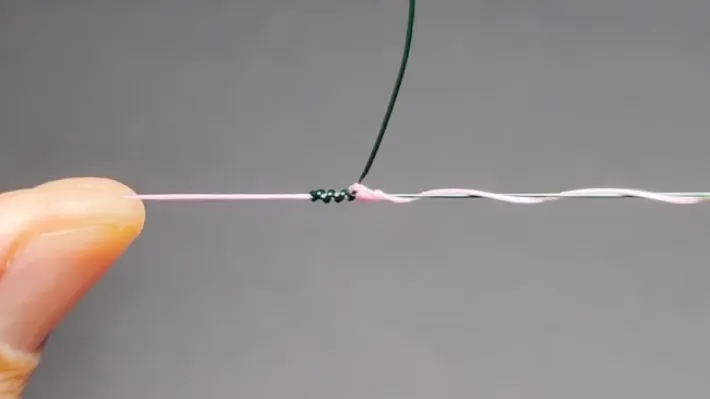
Whether you choose to use the Blood Knot or the Double Uni Knot for fishing, it’s important to know how to tie them correctly.
Tying the Blood Knot
Mastering the technique of tying the Blood Knot requires practice and precision.
- To begin, overlap the ends of the two lines you want to join, leaving about 6 to 8 inches of overlap.
- Take one of the lines and wrap it around the other line 5 to 7 times, ensuring tight and even wraps in the middle of the overlapping section.
- After completing the wraps, thread the tag end of the same line back through the center of the wraps.
- Repeat this wrapping and threading process with the second line, but in the opposite direction. After wrapping it around the first line 5 to 7 times, thread it back through the center.
- Before fully tightening the knot, moisten it with saliva or water to reduce friction.
- Slowly and evenly pull both tag ends in opposite directions to snugly secure the knot, making sure it tightens evenly without overlaps or gaps.
Tying the Double Uni Knot
Now, let’s move on to tying the Double Uni Knot and learn how to tie both the Blood and Double Uni Knot for fishing.
- To tie this knot, start by overlapping the ends of the two lines, allowing for a 6 to 8-inch overlap.
- Create a small loop with the tag end of one of the lines by folding it back over the main line.
- Wrap the tag end around both lines, the main line and the loop, 3 to 4 times.
- The tag end should be threaded through the loop.
- Moisten the knot and slowly pull both tag ends to tighten.
- Repeat the process with the tag end of the second line.
Moisten and tighten both knots, then trim the tag ends close to the knots to finish. Practice will help you master this reliable and effective knot for various fishing applications.
Why is saliva used when tying fishing knots?
When tying fishing knots, you use saliva as a lubricant to reduce friction and heat. This is important because it helps ensure the knot is securely tightened. Friction and heat can cause the fishing line to weaken or even break, resulting in lost fish.
Applying saliva to the knot before tightening creates a slippery surface that allows the knot to slide smoothly and evenly. This reduces the friction generated during tightening, minimizing the heat produced. The saliva acts as a temporary lubricant, making it easier to tighten the knot without causing damage to the fishing line.
Why is symmetry important in the Blood Knot?
The Blood Knot is commonly used in fishing popular for fly fishing in Connecticut because it creates a strong and secure connection between two lines of similar diameter. The knot consists of interlocking wraps that require precise symmetry to ensure even pressure distribution on both lines.
When tied correctly, the symmetrical wraps prevent the knot from slipping or unraveling during the stress of casting and reeling in fish. This symmetry allows the knot to maintain its integrity, giving anglers confidence that their line won’t break or weaken at the knot.
Can the Double Uni Knot be used to connect lines of different diameters?
You can use the Double Uni Knot to connect lines of different diameters. The Double Uni Knot is versatile and commonly used to join lines with varying thicknesses, such as mono to braid.
When connecting lines of different diameters, it’s essential to experiment with the number of wraps to achieve a secure connection. More wraps may be required when joining a thicker line to a thinner one, while fewer wraps may be sufficient when joining a thinner line to a thicker one.
Blood or Double Uni Fishing Knots: Unlocks Ultimate Angling Possibilities
The Blood Knot and Double Uni Knot are effective for connecting fishing lines. Blood Knot offers excellent symmetry, ensuring a secure and reliable connection. On the other hand, the Double Uni Knot is versatile and can be used with lines of different diameters.
Mastering knot-tying opens doors to a world of possibilities in the angling realm, whether the elegant Blood Knot or the versatile Double Uni Knot. It ensures every cast and every catch is anchored securely as you pursue the perfect fishing adventure.

